How To Make A Decor 3d Airplane
Written by
Find out what is involved to bring your creation to life
As seen in the Nov 2020 issue of Model Aviation.
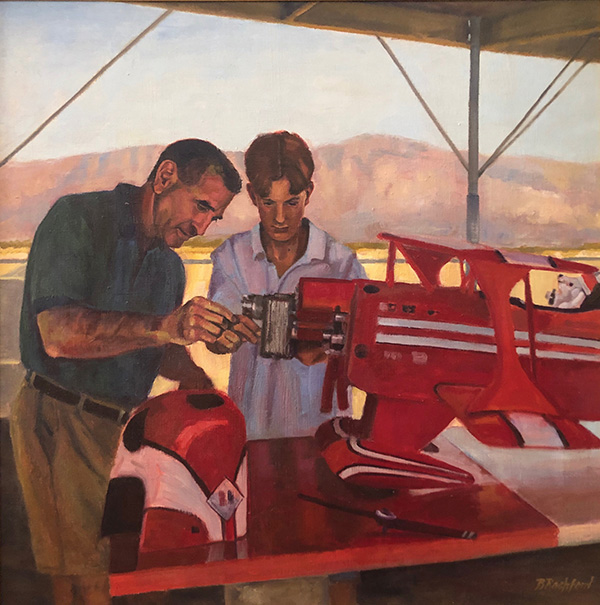
A huge part of my babyhood (equally I am sure many readers can relate to) was spending time with my dad building and flying model airplanes. We would spend weeks, or sometimes months, building an RC airplane from a balsa wood kit. Honestly, I use the word "we" loosely. Dad would practice the bulk of the edifice and I would fly them. Information technology was a pretty sweet gig for a teenage aviation nerd.
Those experiences of watching my dad strop his building skills, and eventually taking part in the edifice procedure together, have shaped my life in several means. First, and most importantly, he taught me by example how to be a supportive begetter as he dove headfirst into this hobby with me to support my passion. That support, from both of my parents, is function of the reason why my passion for aviation is alive and well today. Secondly, those experiences building airplanes and developing problem-solving skills are a major reason why I pursued a career as a production development engineer (see Photograph 01).
I've been a practicing engineer for more than a decade, initially for a large jewelry manufacturer in the Texas loma land, and eventually transitioning to my own production development consulting business. I take very much enjoyed the results of my work throughout the years, simply sometimes the process required to get to those results has been a grind.
Equally I develop in my career, I constantly look for work where I relish the process just as much as the last result. This is where I am today, as a YouTube content creator and 3D-printable RC aircraft designer. How is that previous judgement fifty-fifty a affair?
What a globe we are living in—I mean, for an aviation and engineering nerd, beingness able to take a reel of plastic filament and transform it into a fully functional RC plane is what dreams are made of. In 2020, still, it is something that hundreds of RC pilots worldwide are doing successfully. We are seeing some unique-concept model shipping designs and seldom-modeled calibration shipping designs thank you to 3D press (run into Photo 02).
This article is partially intended to give you a taste of how 3D-printed model aircraft are designed, but I mostly hope to encourage you to practise a niggling research on 3D printing as a possible building technique.
Designing a functional, 3D-printed model aircraft is a perfect alloy of fine art and science. The aesthetics of the aircraft are important, just it needs to exist designed specifically for the 3D printing process, which includes its own ready of challenges when it comes to weight, strength, and the associates features designed into the parts.
Designing the outer, artful shell of the shipping takes only 20% of the procedure, while working out the internal ribbing construction, splitting the parts into manageable, 3D-printable chunks, and designing them to cardinal together takes up the majority of the design fourth dimension (see Photos 03 and 04).
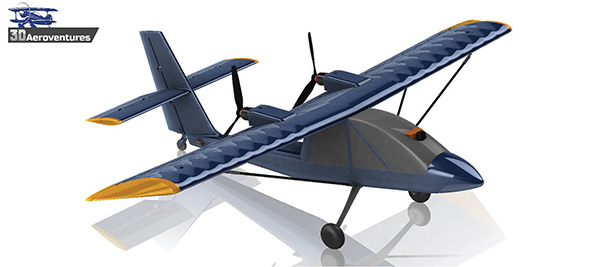
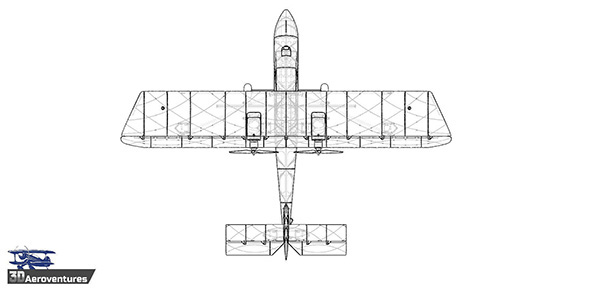
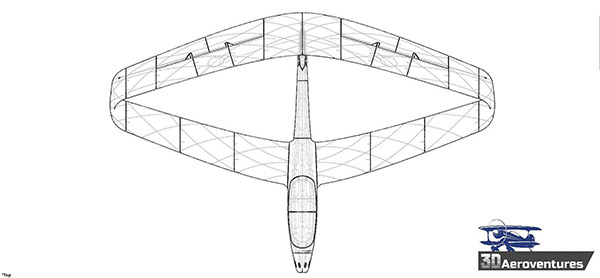
With a traditional, built-upward wooden aircraft, building the skeletal structure of the shipping is one office of the procedure. It is typically covered with an iron-on film or fabric covering to create the peel. One do good of 3D-printed aircraft is that the outer shell (or "skin") and the internal skeletal structure are joined as one, simply the internal structure must be designed to back up itself as information technology prints. Instead of having traditional horizontal ribs and long spars, the wing's skeletal structure is made up of a sparce, interwoven ribbing design that prints in a zigzag fashion (see Photos 05 and 06).
The peel is typically designed to be the thickness of a 3D printer's nozzle diameter, which is well-nigh commonly 0.4 mm, although areas of structural business concern, such every bit wing roots, firewalls, and areas where parts bring together together, can exist designed thicker for added strength. Plus, just equally with traditional RC aircraft, using a carbon-fiber tube as a fly spar or running through the fuselage for added strength is mutual.
Subsequently the outer vanquish and internal construction have been designed, the aircraft is split into manageable, 3D-printable components. The most pop desktop 3D printers on the marketplace have a build area at or above eight × 8 × viii inches (approximately 200 × 200 × 200 mm), then parts are typically split to fit within that build area. Finally, to make the assembly process easier, a male/female keying system is designed into the parts (see Photo 07).
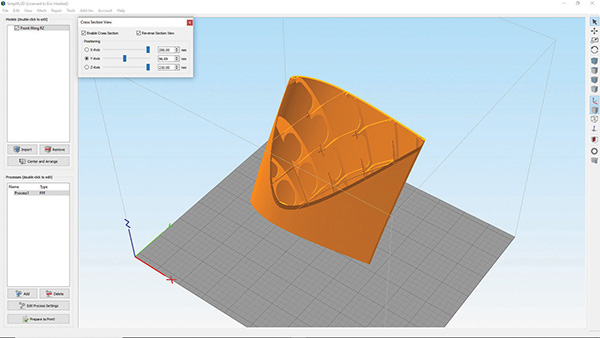
I wanted to give y'all an idea of what goes into designing a 3D-printable aircraft, but you do not accept to be a design engineer or a CAD proficient to have advantage of this technology. Several vendors sell the digital files needed to 3D print an airframe at home. These aircraft are designed to work with a hobbyist-level 3D press technology known as Fused Degradation Modeling (FDM), or Fused Filament Fabrication (FFF). During the FDM printing process, a thermoplastic filament is heated to its melting signal through a pocket-size-bore nozzle and extruded onto the print bed, layer by layer. Information technology is essentially a hot glue gun on a gantry.
By far, the most mutual textile used for 3D-printed shipping is polylactic acid, or PLA, which is an easy-to-impress, rigid plastic that is available in dozens of colors. PLA tin can be brittle and is not very heat resistant, then many builders are experimenting with other materials such as acrylonitrile butadiene styrene (ABS), acrylonitrile styrene acrylate (ASA), or polyethylene terephthalate glycol (PETG) with adept results.
What is the virtually exciting is that materials manufacturers are starting to take notice of those who want to print potent, lightweight parts. ColorFabb, a Dutch materials manufacturer, now produces a material that information technology calls LW-PLA (lightweight PLA). This material is printed at an elevated temperature that causes it to cream as it prints, thus producing a low-density part.
Parts printed properly with this material are typically xxx% to xl% the weight of standard PLA parts. I have personally begun offering aircraft designed specifically for this material, which makes printing micro-size shipping with great flight characteristics a possibility (run across Photos 08 and 09).
Later on the parts are printed, assembly is straightforward. Equally previously mentioned, the parts are designed to cardinal together and gum together well with a medium-bodied CA adhesive and accelerator. In this case, the apply of accelerator is a big benefit because information technology increases the exothermic reaction of the curing glue and bonds the plastic parts together more effectively (run across Photo 10).
I don't want to suggest that 3D press is the all-time way to build an RC shipping. As with every building technique, 3D press comes with its ain pros and cons.
Pros
- The digital files and materials needed to 3D print an aircraft are cheap.
- Subsequently your printer is dialed in to produce high-quality parts, the printing process is relatively hands-off.
- The assembly process is elementary using adhesives that RC modelers are used to working with.
- 3D printing opens the door to unique concept shipping designs or seldom-modeled scale aircraft.
- Scale details tin be molded directly into the parts.
- Parts can be sanded smooth and painted with excellent results.
- Replacement parts tin be easily reprinted.
Cons
- 3D-printing plastics are typically heavier than traditional wooden, foam, or fiberglass models.
- Parts printed with LW-PLA are comparable with the weight of traditional build techniques.
- 3D-printed aircraft are not every bit impact/crash resistant.
- Care must exist taken in high-oestrus environments. Prolonged, direct sunlight on hot days can cause PLA parts to warp.
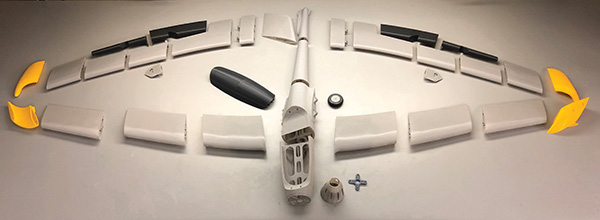
Another adhesive that has proven to exist effective with PLA and other thermoplastics is a product chosen SCIGRIP Weld-On. It is an acrylic adhesive offered in a medium/thick-bodied cement designated equally #16 and a thin, waterlike formula designated as #four. Although these two adhesives are slightly harder to work with and accept longer drying times than CA, they create a stiff bond.
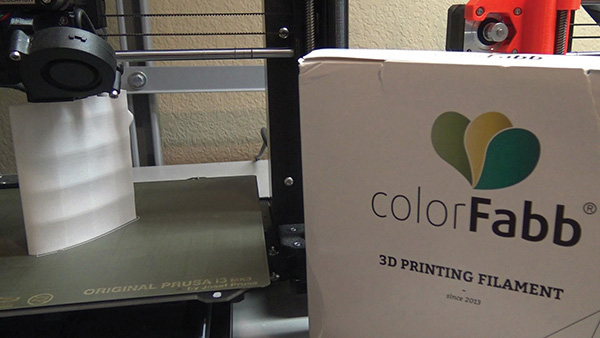
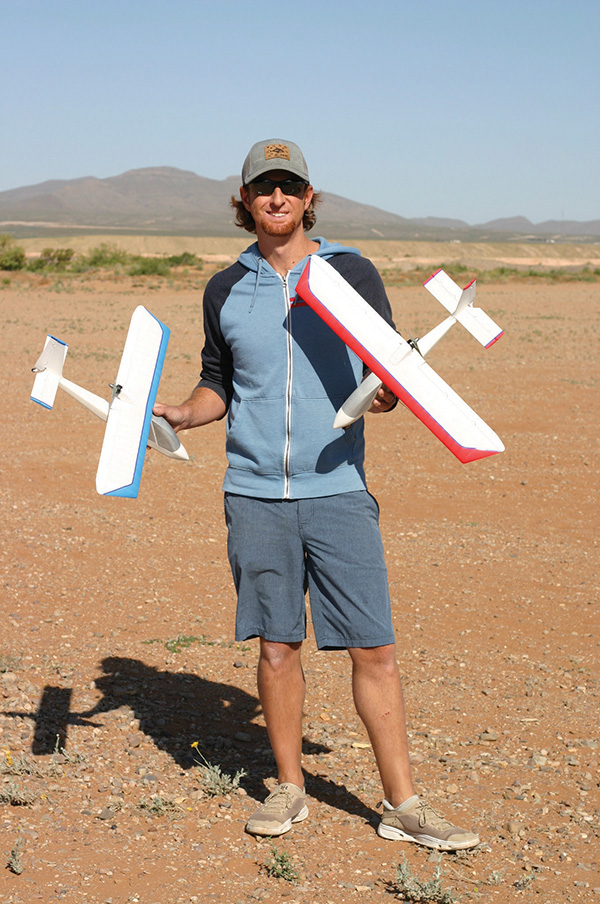
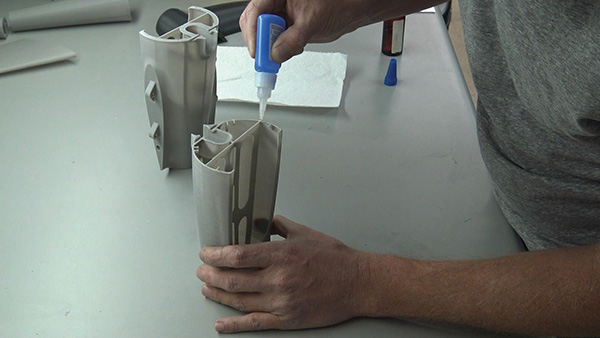
Finishing and painting 3D-printed aircraft can also exist done with impressive results. An unfinished function pulled straight off the printer will take the telltale signs that it is 3D printed: layer lines. These are subtle, horizontal lines on the surface of the function that are inherent to FDM 3D-printed parts.
These can mostly be eliminated past sanding initially with 150-grit sandpaper and working your way upwards to 400-grit sandpaper. Larger surface imperfections tin can exist filled with an autobody filler, such equally Bondo, and minor surface imperfections can be filled with a light coat of an automotive filler primer, which is typically available in a spray tin at almost automotive parts stores.
After a final sanding with 400-grit sandpaper, parts tin can be painted with off-the-shelf acrylic spray pigment or other types of paint using an airbrush (see Photos 11, 12, and 13).
There are some critics in the aeromodeling earth who say 3D printing is not a viable building technique for total airframes. Yes, there are some downsides to the process, just to totally discount it seems shortsighted. I can't tell y'all how many times I've heard, "3D-printed airplanes are simply too heavy to fly well," from those who have never personally given them a adventure. I am here to tell y'all that this is not the case.
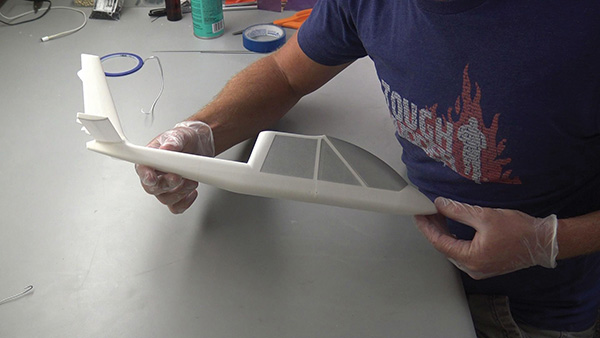
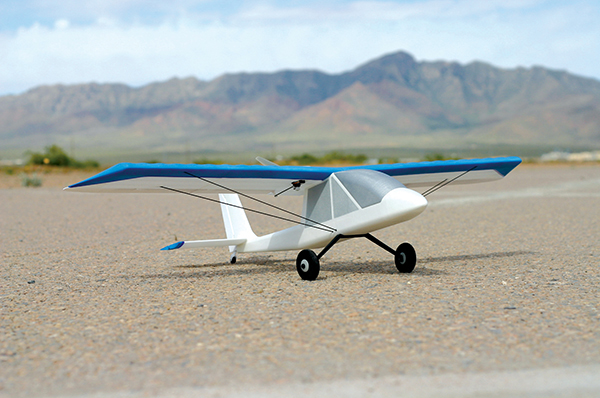
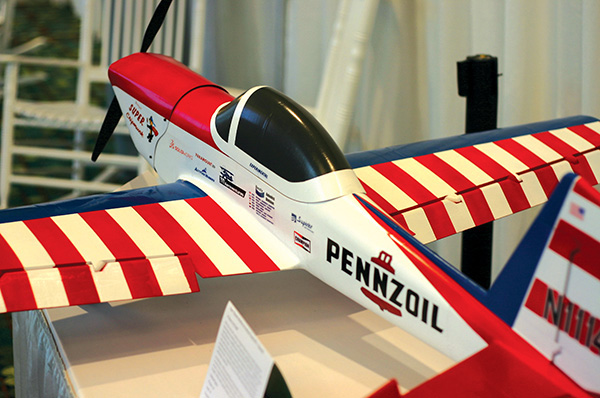
With hundreds of builders out at that place who are having fun printing some nice-flying, unique designs, it is hard to contend with the engineering's viability. Role of our duty every bit aeromodelers is to accept the heart of a instructor and to pass our cognition on to the next generation. If 3D printing is an avenue with the potential to attract a new generation of pilots to the hobby, even if users move on to more traditional edifice techniques, I call that a win.
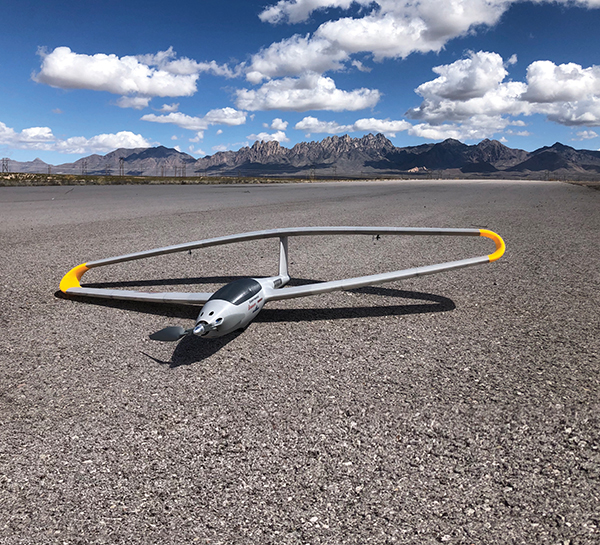
SOURCES:
3DAeroVentures (free sample parts and build guides for available designs)
eric@3daeroventures.com
www.3daeroventures.com
YouTube 3DAeroVentures Channel
www.youtube.com/3daeroventures
By Photos and artwork past the writer eric@3daeroventures.com
Source: https://www.modelaviation.com/3d-printing-rcaircraft
Posted by: vaughnhatic1985.blogspot.com

0 Response to "How To Make A Decor 3d Airplane"
Post a Comment